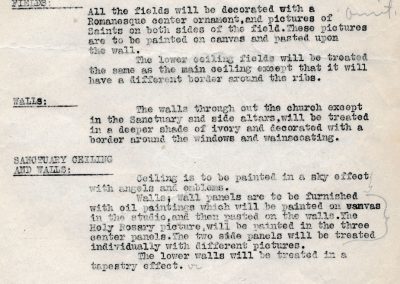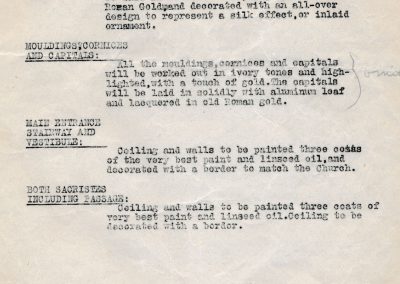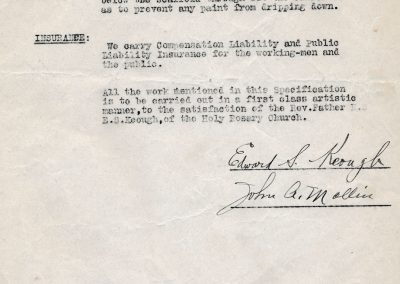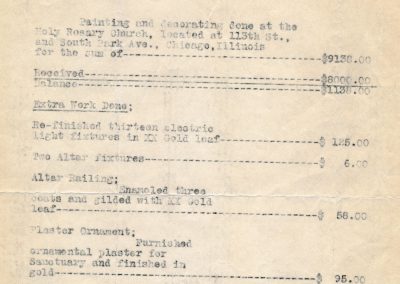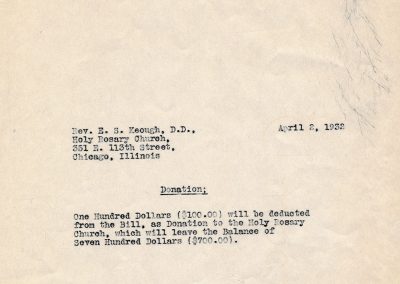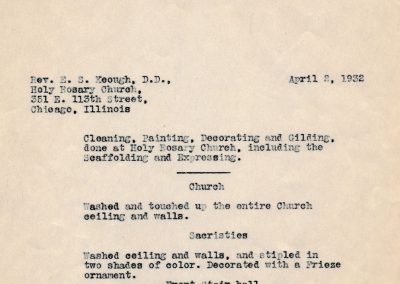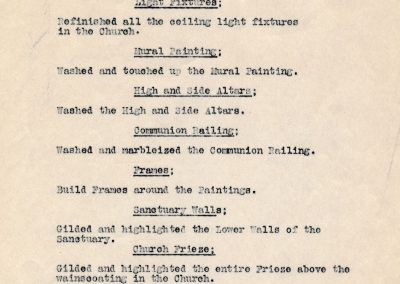Holy Rosary Church
Project Name
Holy Rosary Church
Location
351 E 113th St.
Chicago, Illinois
Project Status
Church open; Mallin decorations destroyed in fire.
Project Date/s
1925, 1926, 1932
Holy Rosary church was established in 1882 in the town of Pullman, which at that time was isolated from the city of Chicago, whose boundaries at that time only extended to 39th street. It primarily served Irish Catholics who lived in the planned community, aka company town, where the Pullman Palace Car Shops produced railroad cars. George Pullman did not want the workers to build their own church within the town boundaries. In 1882, The Rev. John Waldron purchased land in nearby Roseland to build a frame church, which at that time was a Dutch farming community. The church opened in 1883 at the corner of 110th and Indiana. However, as the parish grew, Father Waldron entered into an agreement with George Pullman to build a new Catholic church at 113th and South Park Ave (now King Drive). However, after ground was broken for the church, Father Waldron learned that Pullman would not grant a deed for the property. Father Waldron resigned his post, and in his last sermon, denounced George Pullman as a “capitalist czar; a man who ruled, crushed and oppressed by the force of money.”

Eventually, the deed for the property was obtained and the basement of the church opened for services in 1887. A new church was built and was dedicated in 1890. Over time, several other national parishes were organized within the boundaries of Holy Rosary, serving many different ethnic groups, including, in 1907, Holy Rosary Slovak church.
In 1906, Father Edward S. Keough began his long tenure as pastor of the church. In 1925, there were 487 children enrolled in the parish school. The church, school, and rectory were redecorated in preparation for the Eucharistic Congress being held in Chicago in 1926. This is when John Mallin was hired to decorate the church.
A letter from Mallin to Rev. Keough in November, 1925, included detailed specifications for the church. These included the decorating and design of the ceiling, walls, and main ceiling fields, which were to be decorated with a Romanesque center ornament, with pictures of Saints on both sides of the field. These pictures were to be painted on canvas and pasted upon the wall. The sanctuary ceilings were to be painted in a sky effect with angels and emblems. The sanctuary walls were to include oil paintings which were to be painted on canvas in the studio and then pasted on the walls. The Holy Rosary picture was to be painted in the three center panels, and the two side panels to be treated individually with different pictures. The lower walls were to be treated in a tapestry effect. Other specifications for the rest of the church were also described in detail. The total cost for the decorations was $9,138.
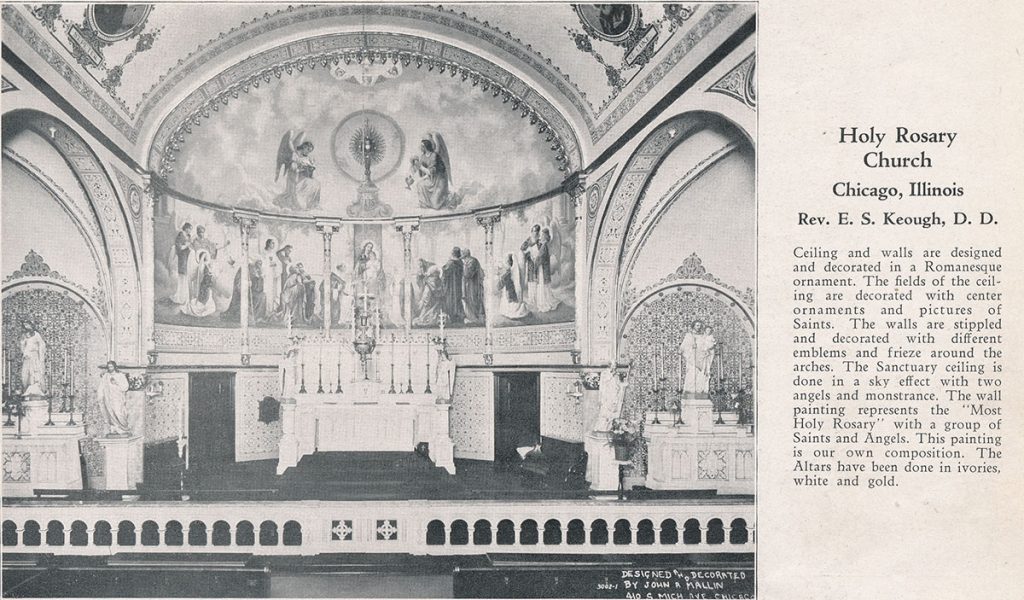
There was also extra work outlined in an April 1926 letter to Rev. Keogh. This work included refinishing 13 electric light fixtures in XX carat gold leaf, enameling the altar railing and gilding with XX carat Gold leaf, and painting and stipling the dado (lower part of the wall).
In 1932, Mallin did additional work in the church, which included cleaning, painting, decorating, and gilding. Examples of this work including washing the sacristy ceiling and walls, stipling the sacristry in two shades of color, and decorating it with a frieze ornament. Other work included washing organ pipes and woodwork, washing and varnishing the pews, building frames around the painting, gilding and highlighting the lower walls of the sanctuary, and polishing the marble columns in the church.

Unfortunately, In March, 1937 there was a fire in the church which gutted the interior including all of the Mallin decorations, but left intact the walls and steeple. The church held services in other donated buildings while the church was being refurbished. The church reopened in 1938, and an addition was added on the south side of the church.
By 1978 there were 350 families in the church, and 238 students were enrolled in the Holy Rosary School. In 1990, Holy Rosary received parishioners from All Saints Catholic Church which had closed. Of note, President Barack Obama once had an office in the church in the late 1980s when he was working as a community organizer. However, in 2011, the Archdiocese closed the church. The church building now hosts a new congregation called New Day Ministries International.
References
A History of the Parishes of the Archdiocese of Chicago Volume 1. Msgr. Harry C. Koenig, S.T.D., editor. The Archdiocese of Chicago, Chicago, 1980.



